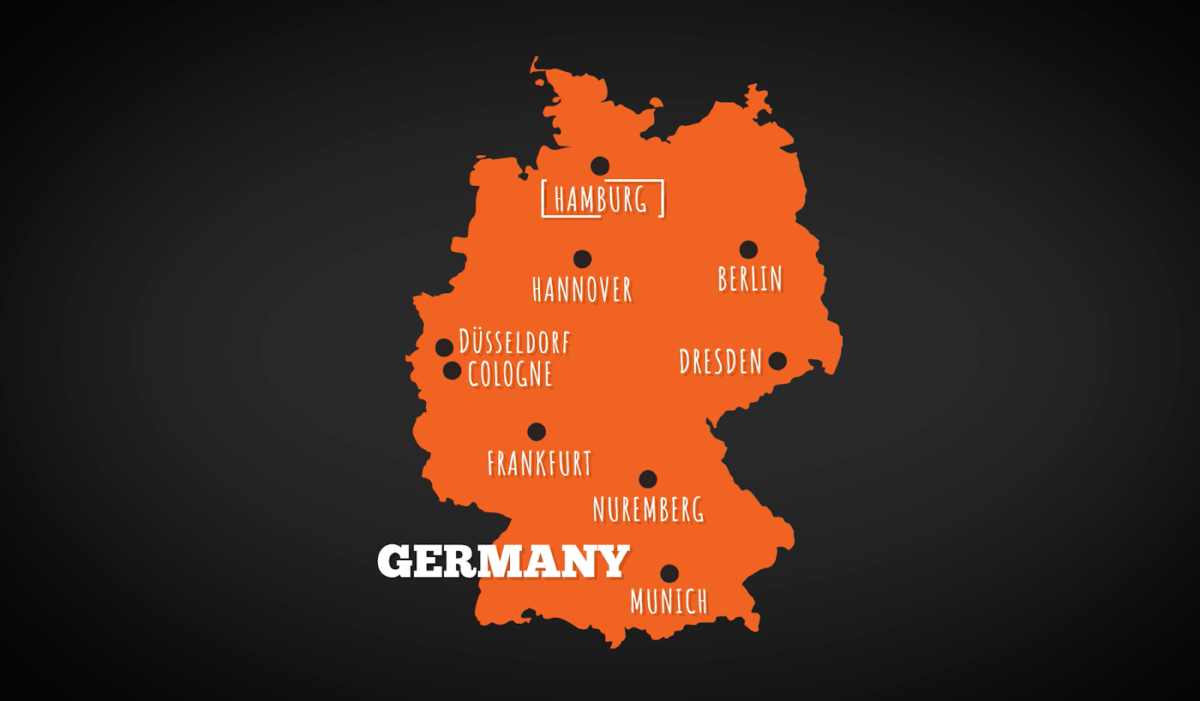The term “hamburger” originates from the German city of Hamburg and not due to any association with ham. Residents of Hamburg traditionally consumed a dish known as Hamburg steak, consisting of a seasoned ground beef patty. This practice led to the adoption of the term “hamburger” for this culinary creation. The inaugural hamburger was crafted in 1900 at the renowned Louis Lunch establishment.
Exploring the Historical Background of Hamburgers
The history of the hamburger is a fascinating chapter in culinary evolution, steeped in tradition and innovation. This beloved dish, often mistakenly thought to contain ham, actually derives its name from a rich global heritage. Following this historical journey, discover practical tips on crafting the perfect patties with our guide on “How to Use a Burger Press for Picture-Perfect Patties.”
The journey begins with the ancient practice of grinding meat, a technique not born in modern kitchens. One of the earliest incarnations dates back to the Tartare tribes of Central Asia, known for their consumption of raw minced meats, a distant relative of today’s hamburger.
Advancing through time, a similar concept surfaces among Mongolian warriors. They carried ground meat under their saddles, where it was tenderized by the motion of their mounts, a method far removed from contemporary cooking techniques. This necessity-driven process was a step toward the creation of the modern hamburger, demonstrating the resourceful spirit that would eventually culminate in the creation of this global culinary icon.
With the growth of trade networks and the convergence of cultures, ground meat recipes started to permeate European cuisine. During the Medieval era, the method of mincing meat grew popular as it provided a means for preservation and simplified consumption.
It was within Hamburg, Germany’s bustling port city and trading nexus, that these ground meat creations began to morph into a more familiar form. Hamburg’s access to diverse goods, particularly high-quality beef, made ground beef dishes a staple among its working-class population due to their cost-effectiveness and straightforward preparation.

The term “Hamburg steak” emerged to describe a seasoned, cooked beef patty, which became a staple meal for laborers and eventually gained popularity beyond the confines of Germany. The narrative takes an international turn during the mid-19th century with the wave of German immigration to the United States. The immigrants carried with them their culinary practices, languages, hopes, and the Hamburg steak. As this dish settled into American culture, it evolved, gradually shaping into the modern hamburger. This evolution marked the beginning of a new chapter in the gastronomic tale of this iconic dish.
The Culinary Journey from Hamburg Steak to Hamburger
The evolution of the Hamburg steak into the contemporary hamburger is a testament to the fluidity of culinary traditions. Originating as a simple, seasoned ground beef patty, the Hamburg steak was an affordable and straightforward meal for the working class of Germany. This dish was destined to become a gastronomic emblem, making its way from Hamburg to the bustling cities of America and undergoing a significant transformation.
With the mid-19th century surge of German immigrants to the United States, a cross-pollination of culinary traditions occurred, introducing the Hamburg steak to a new audience. American culture, with its emphasis on convenience, especially in the realm of cuisine, began to leave its mark on this imported favorite.
The Hamburg steak’s metamorphosis into the hamburger hinged on an ingenious yet simple adaptation: placing the beef patty between two slices of bread. This change catered to the need for portability and ease of consumption, crucial for workers in search of expedient meals during short breaks.
The origin story of this sandwich-style service has multiple claimants. Some accounts suggest Charlie Nagreen at the Seymour Fair in Wisconsin wanted to prevent customers from leaving quickly with their food, while others credit Louis Lassen for serving the steak sandwich to a customer in a hurry at his Connecticut lunch wagon.
Irrespective of the true innovator, the outcome remained consistent: the Hamburg steak was reinvented as a bread-enclosed meal, laying the foundation for what is now known as the hamburger.
This adaptation by American chefs and food vendors not only transformed the Hamburg steak into an American icon, the hamburger, but also perfectly matched the fast-paced lifestyle of the era, paving the way for the fast-food industry.
The Hamburger’s Ascent in American Culture

The hamburger’s prominence in the United States aligns closely with the country’s deep-seated admiration for this culinary staple. During the Industrial Revolution, rapid changes in the economy and societal norms, including dining habits, were afoot. The burgeoning workforce needed meals that were both expeditious and portable. The Hamburg steak, served between slices of bread, emerged as an ideal solution, meeting the need for a meal that was easy to eat on the move, satisfying, and could be served swiftly.
- This practicality solidified the hamburger’s status among laborers and influenced the current methods of hamburger preparation;
- The 1904 World’s Fair in St. Louis marked a crucial juncture for the hamburger, introducing the dish to a broader audience and solidifying its status as a favored street food;
- However, it was the advent of fast food enterprises in the mid-20th century that revolutionized the hamburger’s role in American cuisine;
- Establishments such as White Castle, which debuted in 1921, and later, McDonald’s and Burger King, recognized the inherent qualities that made the hamburger appealing: its speed of service, cost-efficiency, and savory flavor;
- These fast food pioneers mass-produced hamburgers, further ingraining them into American cultural identity.
The hamburger’s journey, from its roots as a German immigrant dish to a mainstay in American dining, reflects broader narratives about societal evolution. It mirrors the transition from the industrial era to the fast-paced rhythm of contemporary life, marked by streets lined with fast-food outlets. The hamburger’s enduring legacy is a testament to its adaptability and appeal, and it remains a beloved fixture in the American gastronomic landscape.
Hamburger Name: A Nod to History Rather Than Ingredients
The etymology of “hamburger” is a frequent source of bewilderment, given its implication of ham, which is conspicuously absent from the dish.
- Clarifying this common misconception, the name “hamburger” does not hint at the presence of ham but rather traces back to Hamburg, Germany. This connection lies not in the ingredients but in the origin of the dish. Hamburg steak, the forerunner to the contemporary hamburger, enjoyed popularity among the German working class;
- The revelation of the name’s true origin often comes as a surprise. “Hamburg” in “hamburger” denotes the geographic reference rather than the type of meat used. With the 19th-century wave of German immigration to the United States, the Hamburg steak arrived on American shores, and as it transformed within its new cultural context, the term “hamburger” remained, despite the dish’s evolution.
For those who value the authenticity of the hamburger, its name is not misleading but rather an homage to its German heritage. It stands as a testament to the dish’s lineage and evolution. Beyond its savory taste, the hamburger encapsulates a piece of history, embodying the narrative of cultural exchange and the dynamic nature of culinary traditions.
Conclusion
In conclusion, the journey of the hamburger from a simple ground beef dish in Hamburg to a culinary phenomenon worldwide is a testament to its undeniable appeal. The hamburger’s evolution and wide-spread popularity not only reflect our changing lifestyles and culinary practices but also tell a fascinating tale of cultural exchange and adaptation. Each bite of a hamburger is not just a culinary delight; it is a bite into a piece of history, a globally shared experience that continues to evolve and bring people together.


